In Brief: Azzam illustrates Levi-Strauss on Mythologiques
[ by Charles Cameron — the geometry of two miracle stories from Abdullah Azzam ]
.
These two tales are taken from Abdullah Azzam, Signs of ar-Rahman in the Jihad of Afghanistan.
**
Binary oppositions seem to be basic to the human thought process, and this simple, elegant observation has in turn given rise to a number of interesting philosopphical explorations, some of which are expressed perhaps most powerully in diagrams. I am thinking here of the medieval square of opposition — as in this diagram taken from Georg Reisch, Margarita Phylosophica tractans de omni genere scibili, Basel 1517:
Algirdas Greimas developed his semiotic square from this medieval diagram —
— and defines his square as the “visual representation of the logical articulation of any category”. In his “Towards a Theory of Modalities”, Greimas writes:
the terms manifestation vs. immanence .. can be compared profitably with the categories surface vs. deep in linguistics, manifest vs. latent in psychoanalysis, phenomenal vs. noumenal in philosophy, etc.
Then there’s Levi-Strauss and his triangle, essentially a variant on the same idea, applied by LS in his magnificent 4-volume Mythologiques to a wide range of myths — here’s the basic triangle for the first volume, The Raw and the Cooked:
**
What Reisch, Greimas and Levi-Strauss are all doing lies in its own distinct area of “visual thinking” at the confluence of logic, algebra, geometry and conceptual graphs — the same area my own DoubleQuotes and the HipBone and Sembl games are found in.
When people think about narrative — and it is or should be as hot a topic in strategy and counterterrorism as it is in myth, story-telling, film and their various related forms of criticism — they tend to think linearly, from beginning to end, noting the emotional expansions and contractions, the narrative shifts, the crescendos before the climax and its resolution.
My own style of thinking leans more to the atemporal or synchronic, which in turn is closer to the logical-algebraic-geometric-graphical mode of visual expression. Thus, for me, the “myth of Narcissus” is not a story-line but a geometry, a narrative formulation of the concept of reflection, or “bouncing back”. To adapt the Levi-Strauss triangle to the Narcissus narrative, then, we have:
while the two Azzam miracle tales in my DoubleQuote at the top of this post give us:
This in turn can become a square if we allow the four coordinates to be wine (intoxicant, bad), water (sobriety, good), vinegar (sour, bad) and honey (sweet, good). We notice here that water (sobriety, good) is the fourth which hovers unmentioned over the twin tales, just as Jung argued the dogma of the Assumption of the Virgin into heaven was the “fourth” which “completed” — nb, this is from a psychological perspective — the celestial Trinity of Father, Son, and Holy Spirit.
It remains for Jalaluddin Rumi to transcend the duality of the halal (sobriety) and the haram (intoxication) in his praise of his master, Shams of Tabriz:
In Shams al-Din-i Tabrizi you will discover a heart which is at once intoxicated and very sober.
**
In what sense or senses are Azzam’s two tales two, and in what sense are they one and the same?
Sources & suggested further readings include:
The Raw and the Cooked: Mythologiques, Volume 1 Anthropology for Beginners Structure, Sign, and Play in the Discourse of the Human Sciences The Dual and the Real Semiotics for Beginners Semiotics and Language Visual Memory (handbags!) Punctualization: Law and Greimas Square of Opposition Visualizing knowledge Signs of Ar-Rahman Mystical Poems of Rumi
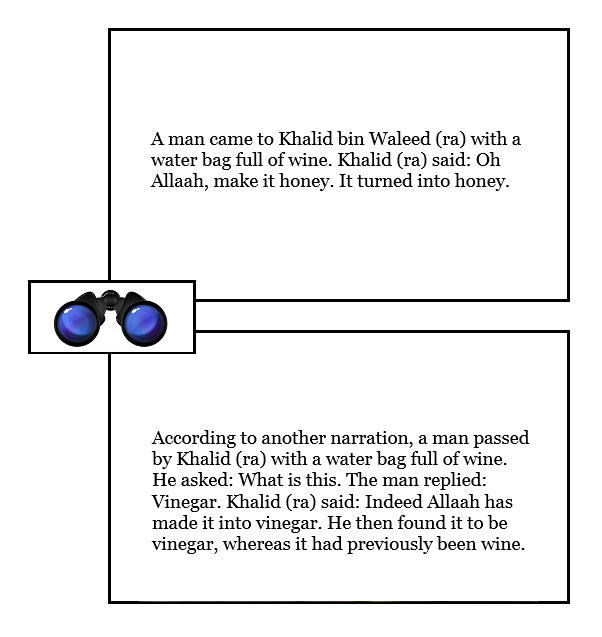
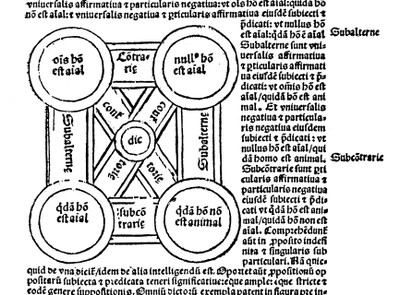

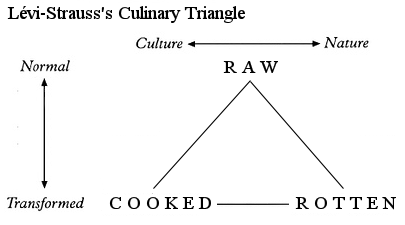
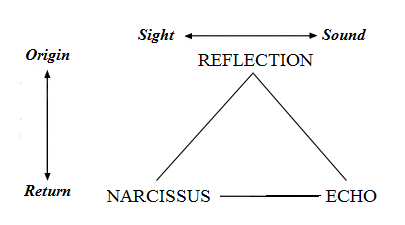
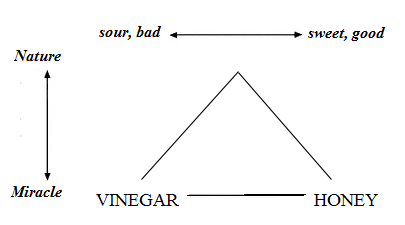



March 7th, 2015 at 9:15 am
Charles,
Your post is a great eye-opener that goes well with my morning coffee.
.
“In what sense or senses are Azzam’s two tales two, and in what sense are they one and the same?”
In both cases, Allah brings about change; unity.
In one case, sweet, in the opposite case, sour; dualistic.
.
Clausewitz’s Trinity incorporates tensions between the three elemental forces that have both unifying, and dis-unifying tendencies as was the case observing Napoleanic France with unifying tendencies bringing about total war.
March 8th, 2015 at 6:06 pm
The same structure was used: a water bag. Also the same, water, the culture the bag was designed for, held a different position, within the society, than what was actually in the bag, wine.
In both cases, wine was changed into something that would give each man a different position within their society. A position judged to be the correct one (unity).
The difference was the will of both men. One was willing to be judged as the holder of a bag of wine, the other was not.